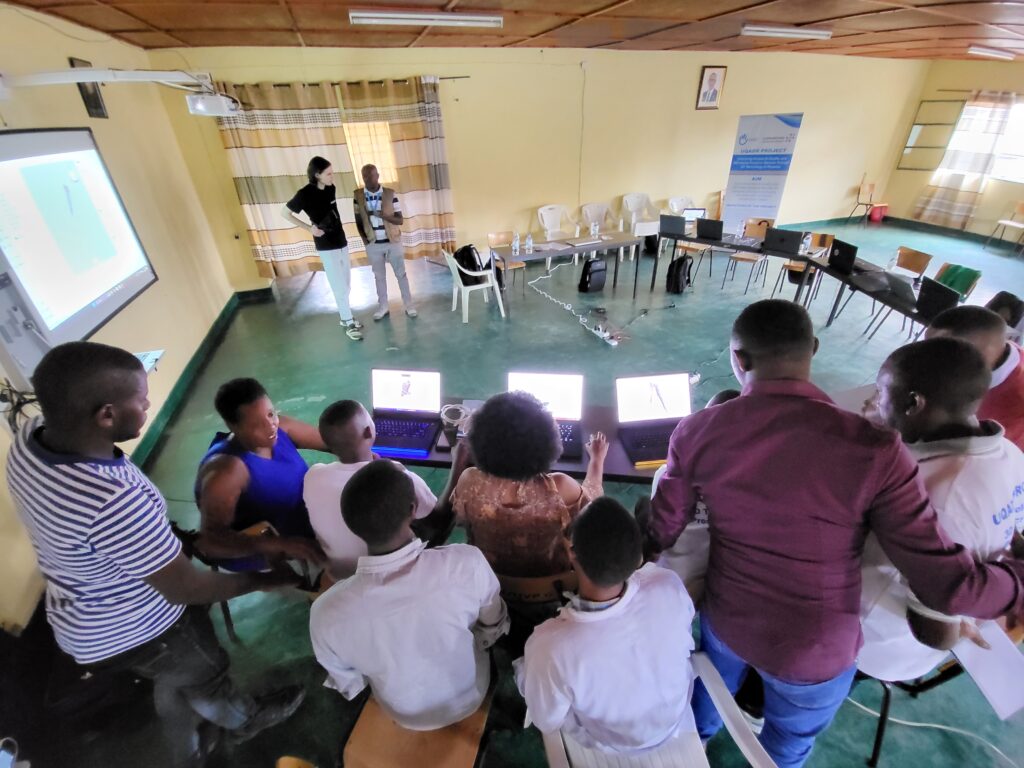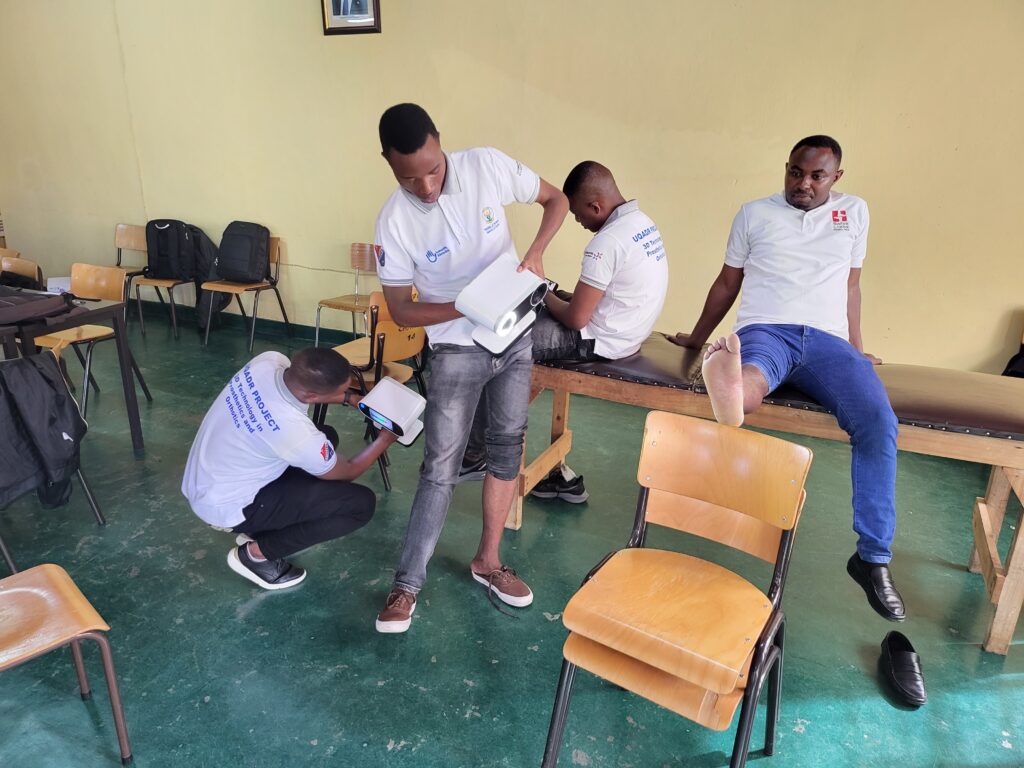Artec 3D, one of the world’s leading original equipment manufacturers (OEMs) of 3D scanning hardware, has partnered with nongovernmental organization (NGO) Humanity & Inclusion (HI) on a project centered around the customization of medical devices in Rwanda. HI medics in Rwanda have so far acquired two Artec Leo scanners via the project, which is backed by the Luxembourg Ministry of Foreign Affairs.
The Leo, the world’s first wireless 3D scanner, enables the medical professionals on the ground in Rwanda to quickly scan patients’ torsos, arms, and legs, creating the data necessary to ultimately produce custom orthotics and prosthetics. In particular, HI plans to use additive manufacturing (AM) to produce medical devices for children that can be easily replaced with new iterations in parallel to the children’s growth.
As part of the endeavor, two members of the Artec 3D team flew into Rwanda to train staff, in a five-day process which entailed both an introduction to scanning and data processing, as well as instruction in hardware troubleshooting. According to Artec 3D, the HI staff found the Leo to be far easier to use than the lower-cost device they’d been using previously.
In a press release about the project, Artec 3D’s CEO and President, Art Yukhin, said, “It’s remarkable to see how Artec 3D’s partnership with [HI] is improving healthcare accessibility in Rwanda. Leveraging cutting-edge technology like the Artec Leo, with its ease of use and intuitive interface, creates a significant impact on the ground by empowering medical staff to provide tailored solutions efficiently, especially to those in remote areas. It’s heartening to witness technology being harnessed for such impactful humanitarian endeavors. Following the success of our initial project with HI, we hope to recreate such promising experiences in other regions.”
Robert Clement Hakorimana, HI’s technical project manager, said, “This technology covers all our prosthetic and orthotic needs. Already, we have invited people from different hospitals to get them using this technology. We’ve also notified the Ministry of Health, so they can make it their own, and help disseminate it across the country.”
The ability of manufacturing technologies based around 3D imaging capabilities to enable the creation of rapid training programs for first responders could genuinely transform the medical profession in coming years. In doing so, as this project demonstrates, patient outcomes can also be dramatically improved compared to what was previously possible with legacy manufacturing.
And, beyond and alongside both potentialities, the combination of 3D scanners and AM can be pivotal in helping national economies bolster their supply chain resilience. While the world’s most advanced industrial nations have been at the forefront of supply chain resilience efforts in the 2020s, nations like Rwanda are of course in more urgent need of similar efforts.
Thus, in addition to the direct humanitarian benefits represented by the Artec 3D/HI partnership, the project also suggests the longer-term, indirect benefits of putting more advanced manufacturing equipment in the hands of Rwandans. Along those lines, those in advanced manufacturing other sectors may want to see how they can copy what’s being done in the medical device space in terms of rapid education.
Images courtesy of Artec 3D
Subscribe to Our Email Newsletter
Stay up-to-date on all the latest news from the 3D printing industry and receive information and offers from third party vendors.
Print Services
Upload your 3D Models and get them printed quickly and efficiently.
You May Also Like
The Dental Additive Manufacturing Market Could Nearly Double by 2033, According to AM Research
According to an AM Research report from 2024, the medical device industry, specifically in dentistry, prosthetics, and audiology, is expected to see significant growth as these segments continue to benefit from...
Heating Up: 3D Systems’ Scott Green Discusses 3D Printing’s Potential in the Data Center Industry
The relentless rise of NVIDIA, the steadily increasing pledges of major private and public investments in national infrastructure projects around the world, and the general cultural obsession with AI have...
AM Research Webinar Explores Continuum’s Sustainable Metal Additive Manufacturing Powders
Metal additive manufacturing (AM) powder supplier Continuum Powders is working to develop solutions that empower industries to reduce waste and optimize their resources. An independent life cycle assessment (LCA) of...
3D Printed Footwear Startup Koobz Lands $7.2M in Seed Round
California-based Koobz is focused on reshoring the U.S. footwear supply chain with advanced manufacturing processes, including 3D printing. The startup just announced that it has added $6 million to its...


































